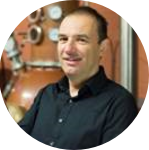About This Project
The aim of this study is to connect foraging activity of honey bees (Apis mellifera) to incoming food supply (nectar and pollen). With the use of sensors, weight trackers and counters, we'll track foraging bees entering or exiting the hive, as well as conditions in the hive. This information will tell us more about how changes in the food supplies and quality, such as from climate change or pesticide intake, can affect foraging, colony growth and colony health.
Ask the Scientists
Join The DiscussionWhat is the context of this research?
Honeybees suffer severe threats like the use of neonicotinoids and Varroa mite attacks. This puts worldwide honeybee populations under pressure. Already intense research has been carried out on honey bees but research on foraging activity has been limited to estimation or tracking with small radio frequency ID tags, so called RFID's. On Instructibles, however, an open source Bee Counter was presented that can give a more accurate recording of colony foraging activity. Combined with real-time weighing of individual incoming and outgoing foragers, this can give a detailed view of day-by-day food supply entering the hive.
What is the significance of this project?
The consequences for global honey bee populations decline are obviously not negligible: it is estimated that annual pollination value worldwide is about 153 billion euros (Hein, 2009; Losey & Vaughan, 2006). A correlation between food supply and foraging activity seems obvious but it is interesting to see how this food is used by the colony. Food allocation gives an idea on the use of pollen and nectar on worker force building and colony homeostasis. When the correlation is clear, it could later be linked to weather or environmental conditions in order to investigate the influence of climate change and pesticide use to colony fitness and the occurrence of problems like Colony Collapse Disorder (CCD).
What are the goals of the project?
Research Question
What is the amount of food (nectar and pollen) supplied by honeybee foragers and how can be it measured and/or calculated where the food is going?
This project wants to focus on how much food enters the hive every day and try to correlate this with the everyday need to produce worker bees, maintain the ideal hive temperature and humidity and, at the end of ‘bee season’, build a winter supply.
The connection with a small weather station gives the possibility to link hive activity and the annual cycle of the colony to local weather conditions.
Budget
Foraging activity is monitored by tracking bees by means of the small IR-sensors in the entering gates. The load cells are miniature weighing devices that can register the weight of a single bee, so that every single amount of food entering the hive can be detected. Installing IR-sensors and load cells requires a set of gates in plastic, in such a way that it has to be weather resistant and cannot hinder the bees in any way. IR-sensors & load cells are connected to an Arduino, a programmable microcontroller. The Arduino is also connected to all the thermistors (temperature sensors) and humidity sensors in the hive, to assess brood size and metabolic activity.
The Raspberry Pi is a microprocessor that converts the Arduino temperatures into a 'thermal image' of the brood. It also takes images from the landing platform and serves as the weather station.
All gathered data are send real-time to a Google Drive by means of a 3g/4G data connection (Arduino shield).
Endorsed by
Meet the Team
Peter Berx
Ever since I can remember I've been fascinated by insects. I'm interested in pollination, social insects (mostly ants), biological control and forensic entomology.
I graduated as a lab technician and worked a few years in a distillery but started working as a production manager for companies involved in mass rearing of insects and other arthropods for biological control. In 2009, I became education manager in an insect museum. My job involves content development for the insect museum exhibitions and our guided tours.
The insect museum is part of a visitors center, which in turn is one of the six gateways to the only National Park in Belgium. Originally founded as a fertilisation station for carnica honey bees, Lieteberg still has a bee house.
In my sparce free time I work as a volunteer for the Limburg Nature Study Group (LIKONA) and recently I've finished a Bachelor in Environmental Sciences at Open University. I plan to start a Master in Biology next September.
Since 1996, I live in Alken, a small town in Belgium. I keep my own bees but currently own just one hive. I plan to expand to three hives but keep them mainly out of interest in social insects.
Project Backers
- 50Backers
- 100%Funded
- $1,700Total Donations
- $29.08Average Donation



